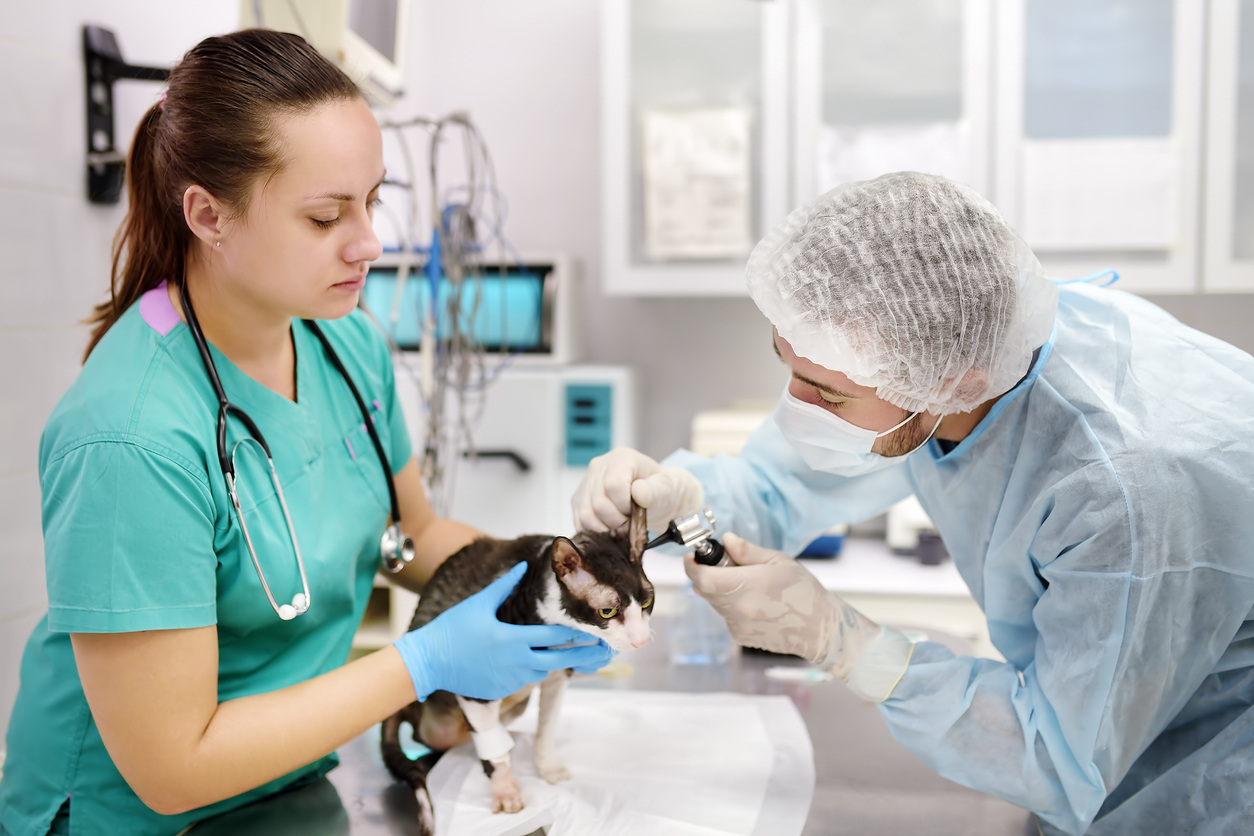The shortage of veterinary staff affects everyone in the animal-lover ecosystem, and there doesn’t seem to be an end in sight. Veterinary professionals continue to leave the industry, and there aren’t enough students in the educational pipeline to replace them.
While those systemic challenges won’t change overnight, that doesn’t mean there’s nothing to be done. In fact, you can start today by optimizing one of the most valuable resources you already have.
Certified veterinary technicians: your most underused resource.
Veterinary technicians (aka vet techs, or veterinary nurses if you’re in the UK) are the backbone of any healthy practice. Clinic revenue increases by about $93,000 to $103,000 for each certified vet tech on staff.
Unfortunately, certified veterinary technicians have one of the highest turnover rates in veterinary medicine.
Why do so many veterinary technicians leave the industry?
Some of the reasons vet techs leave – long hours, compassion fatigue – are common to everyone in the industry. But certified veterinary technicians name two additional reasons:
Low pay vs. high debt
An MIT study published in 2022 concluded that a living wage in the US is $24.16 per hour. But the US Bureau of Labor and Statistics reports the mean wage for veterinary technicians at only $17.72 per hour.
But many of them enter the profession in the red. More than one in three vet techs graduate with an average of $30,000 in student debt. Additionally, about a third work a second job (often full time) to manage loan repayments and regular living expenses. Some even work a third job.
Training vs. job responsibilities
The training required to become a certified veterinary technician is intense. But many vet techs are underutilized, spending much of their time on non-medical tasks such as:
- Answering phones (other than triage calls)
- Booking appointments
- Processing payments
- Cleaning cages and exam rooms
While it may be great to have a team that works together to do what’s needed, it doesn’t make for a good long-term strategy. When vet techs spend a disproportionate amount of their time on tasks they could do without having invested all that time and money on their education, they’re more likely to become disengaged and, eventually, to leave. It’s a phenomenon that’s become known as “task illegitimacy.”
“Task illegitimacy” refers to a situation where an employee is regularly expected to perform tasks that violate their sense of professional identity.
Good news: It's never too late to empower underutilized vet techs
If your vet techs aren’t spending the vast majority of their time working with patients, doing the work they’re trained for, that’s potentially very good news – because you’ve got a huge untapped resource.
While they can vary somewhat by state by state in the US, tasks that vet techs can perform under a veterinarian’s supervision include:
- Assisting in surgery (including administering anesthesia)
- Monitoring and caring for pets in post-op
- Cleaning pets’ teeth
- Performing X-rays
- Placing catheters
- Drawing samples and performing lab tests
- Educating clients on general aspects of pet care
- Grieving with families who receive a bad diagnosis or have to euthanize a pet
- Counseling pet parents on behavioral issues
How to make sure your vet techs are doing what they do best
The first step is to ask yourself why you’re not using your vet techs appropriately. Don’t be surprised if the answer to that question is…you!
“Veterinarians think of themselves as being the first violinist instead of the conductor, as they should. By always having to put the catheter in, draw the blood, interact with the client, the veterinarian becomes a bottleneck and burns out, too,” Shlomo Freiman, DVM, CVO, co-founder of Petriage, told AAHA's Trends magazine.
First step: Get out of their way!
As the practice owner, you’re ultimately responsible for everything. So it’s natural to have some qualms about how much you should delegate to your vet techs. But they have been trained and are legally cleared to perform a broad set of tasks. It’s fine to observe them until you’re comfortable, but get the process started!
The bonus? You get to spend more time doing the things that only you can do. And if you’ve been doing tasks your vet techs are perfectly capable of doing, they’re not the only ones who are underutilized!
Reassign other tasks.
If your vet techs have been doing a lot of administrative work and housekeeping tasks, somebody else is going to have to take those on. It’s possible you’ll need to hire an additional veterinary assistant, office manager, or front-desk receptionist.
However, veterinary software like Provet Cloud can streamline and automate so many tasks that things might run just fine with the staff you have.
Here are a few features clients love because of the way software can enhance efficiency and productivity:
- Online scheduling reduces the amount of time employees spend on the phone.
- Task automation can take care of simple but time-consuming chores like sending clients text or email reminders about upcoming appointments (or of the need to schedule a checkup, vaccine update, etc.).
Privacy laws require clients to proactively opt-in to receiving text and email messages. The GDPR has very strict privacy laws for the EU. In the US state laws can differ greatly, so you’ll definitely want to do your research. Err on the side of caution!
- Customized workflows help make sure everyone knows what they need to do when a patient arrives.
- Invoicing integrations allow you to automatically generate branded invoices. You can even customize them with things like discharge instructions, reminders to consider pet insurance, etc.
- Other integrations make it easy to send testing requests directly to your favorite labs and to access the results, eliminating the need for follow-up calls.
And those are just some of the ways practice management software like Provet Cloud can get your vet techs out of the office and into exam rooms with patients.
Educate your clients.
When your veterinary technicians start taking on tasks you used to do yourself, your clients may be a bit hesitant. But once you reassure them that your vet techs are more than capable of taking care of their pets, they’ll start seeing the benefits:
- Vet techs can spend more time with clients than you can.
- Though they can’t make diagnoses, they can answer many of the clients’ questions.
- They can also advocate for things like adding pet insurance, the importance of vaccines and heartworm medication, etc.
Here are some ways you can get the word out to your clients about your vet techs’ evolving roles:
Your leadership and support
Your clients will treat your vet techs the same way you do. So set high expectations:
- Use the appropriate titles: Reserve the title “vet tech” for those who have completed their education and passed the exam.
Something else that vet techs feel violates their professional identity? When veterinarians, practice managers, and others refer to everyone as “vet techs,” regardless of their training.
- Brag about them: Tell your clients how much education they have and how hard it is to earn that level of certification.
- Set expectations: As you shift more tasks to your vet techs, pop in to welcome your clients and to let them know what the vet tech will be doing and whether they’ll see you again before they leave.
Self-advocacy
There will always be clients who say, “I’ll wait for the vet” when a vet tech asks if they have any questions. Encourage your vet techs to say something like, “It may be a few minutes, and I’m here now. Why not give me a try?”
Signage
The North American Veterinary Community (NAVC) is on a mission to make sure veterinary technicians get the respect they deserve via their “Trust me, I’m a veterinary technician” campaign, which includes posters you can print out and display in your clinic. Or you could design your own posters featuring pictures of your vet techs.
Name tags
If your employees wear name tags, add the title “Certified Veterinary Technician” as well as any advanced specialty qualifications.
Social media
If you use social media, the NAVC has your back there, too. Their #TrustYourVetTech social media campaign includes posts optimized for Facebook, Instagram, X, and LinkedIn. The images are free to download, and you can customize posts with your own text. You can also share images of your vet techs doing their jobs, although they’ll need to sign a release first. You can download a release form like this or create your own in Provet Cloud.
Your practice website
If you have an “About” page on your website, include a picture and short bio of everyone in your practice. It’s a great way to engage with your customers and make it easy for them to feel like they know you!
Your certified vet techs just may be your clinic’s hidden treasure
By giving them tasks that are in line with their training, and by promoting their credentials to your clients, you can increase both revenue and retention. As a bonus, you get to focus on the tasks that only a veterinarian can do!
Want to learn more about how Provet Cloud practice management software can help your clinic run more efficiently so you and your vet techs can spend more time with patients? Click here to schedule a demo!


